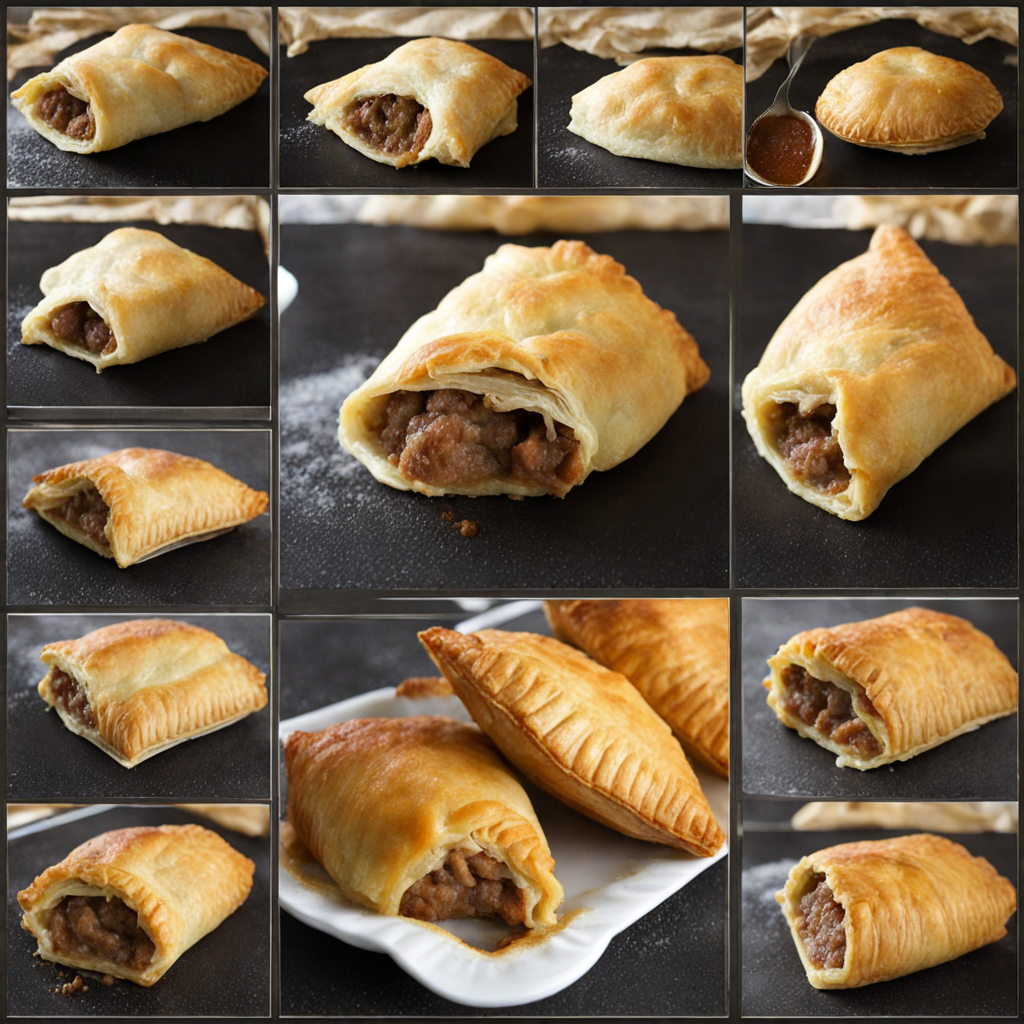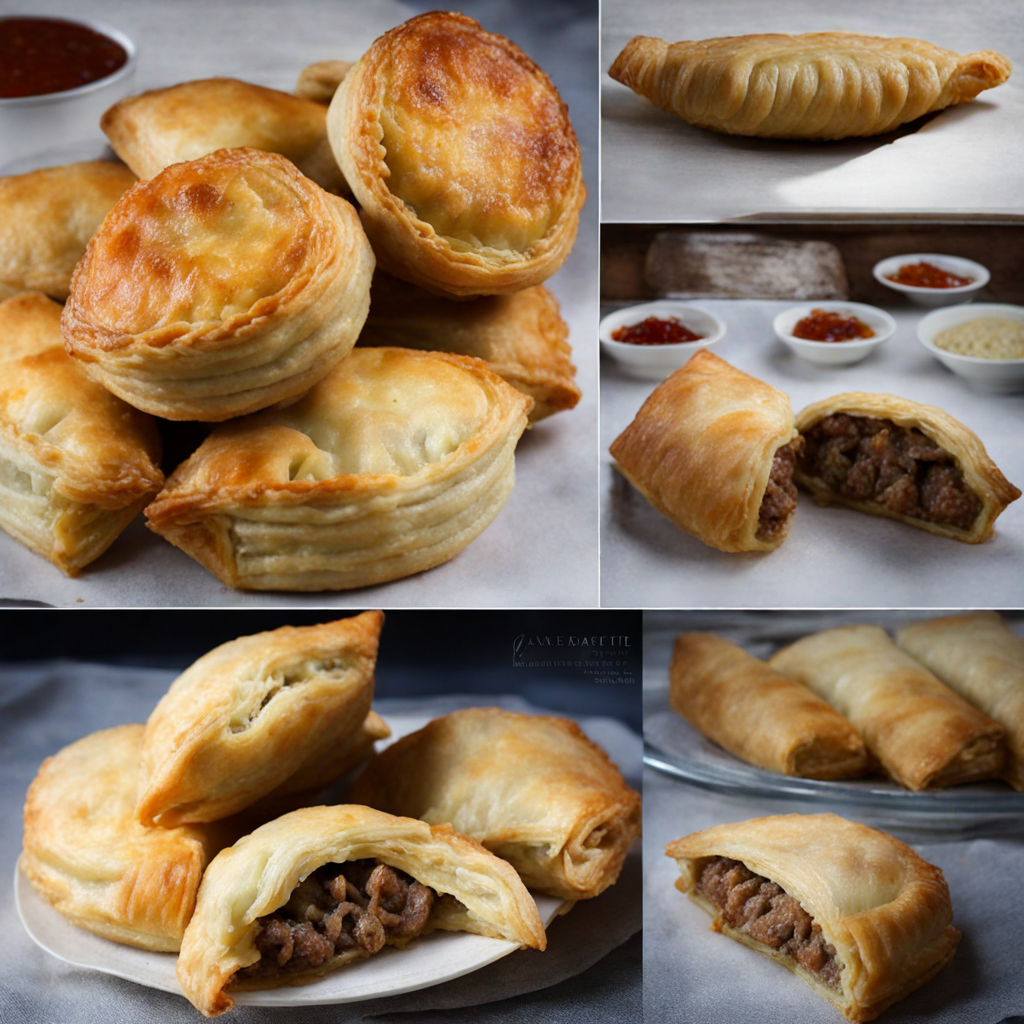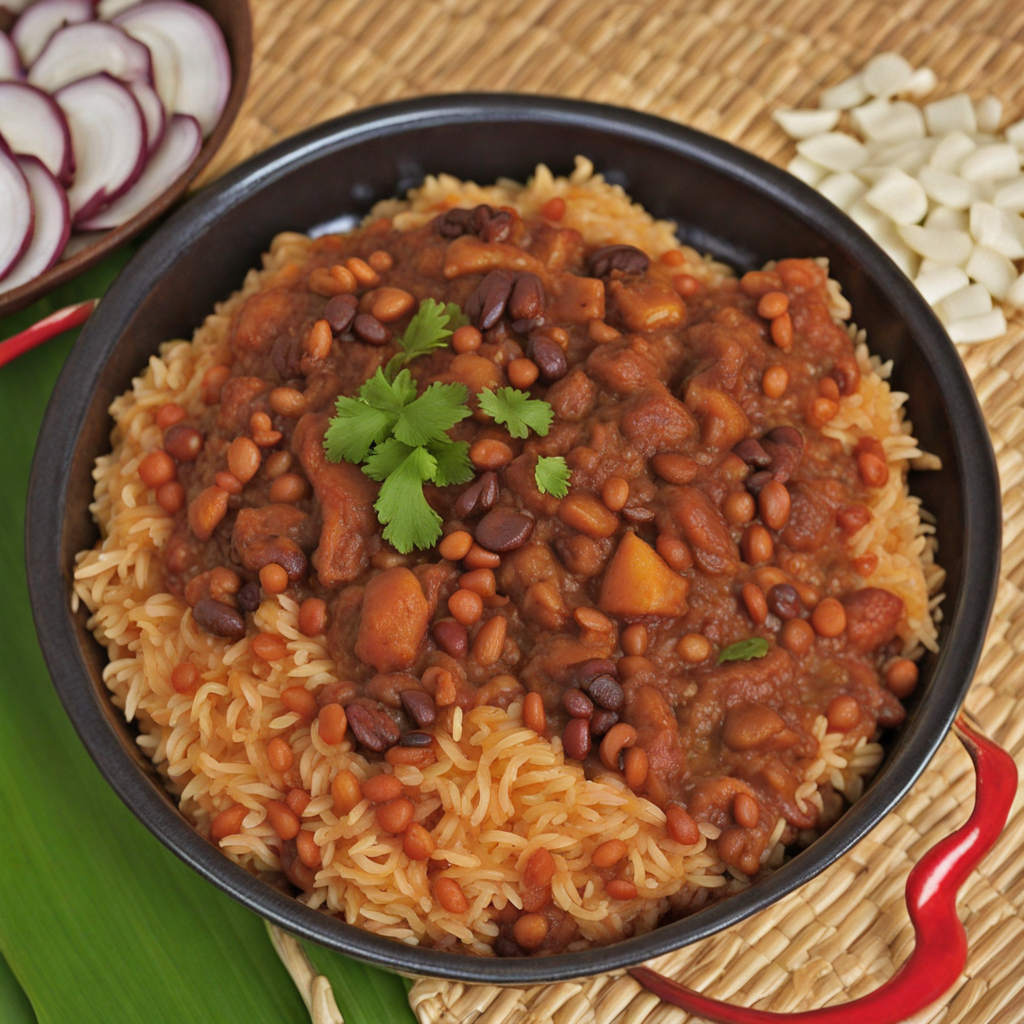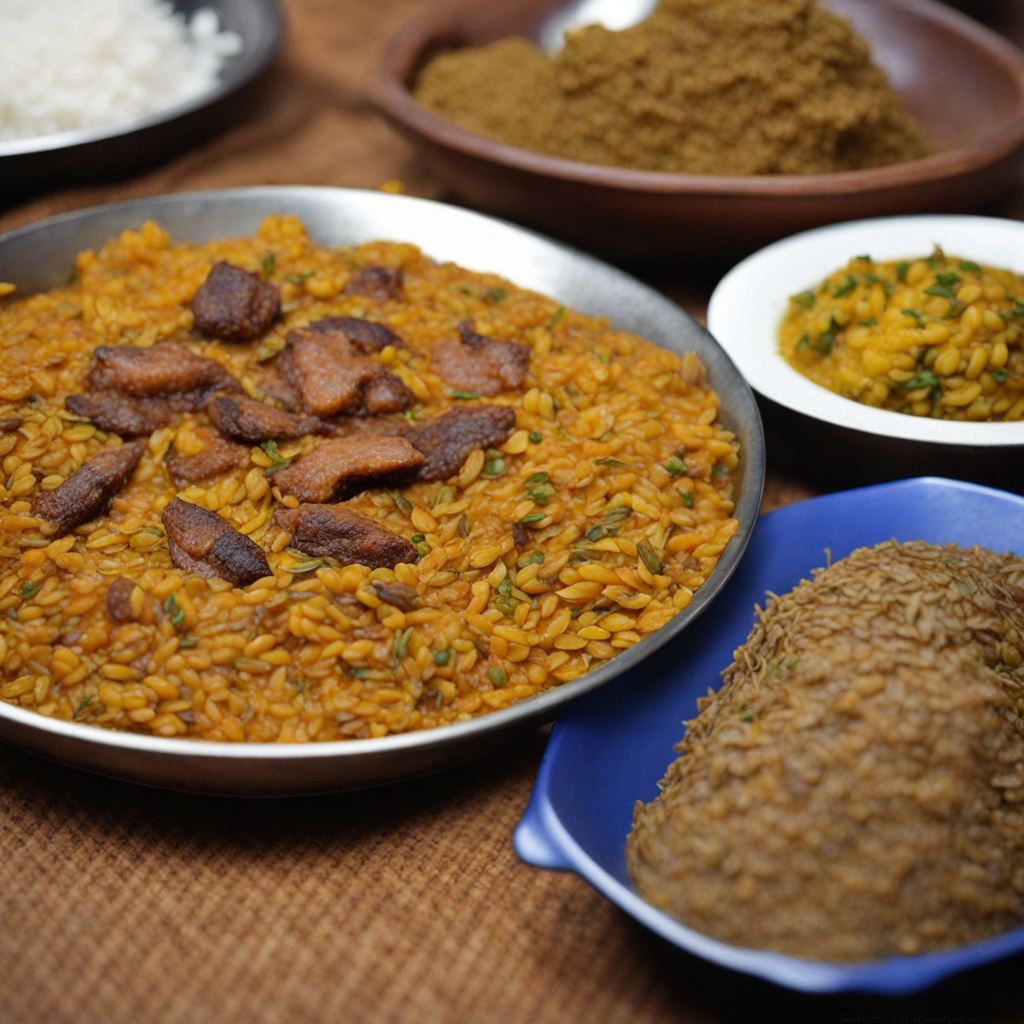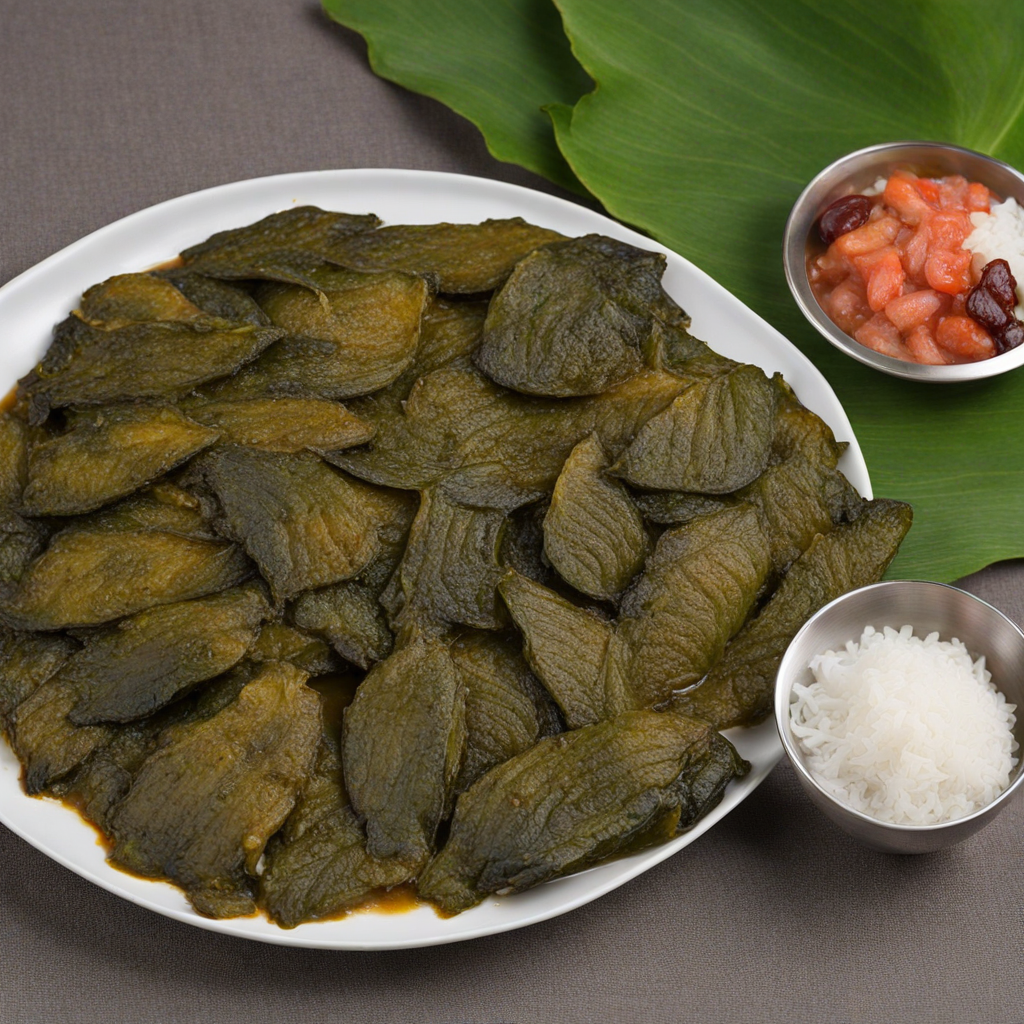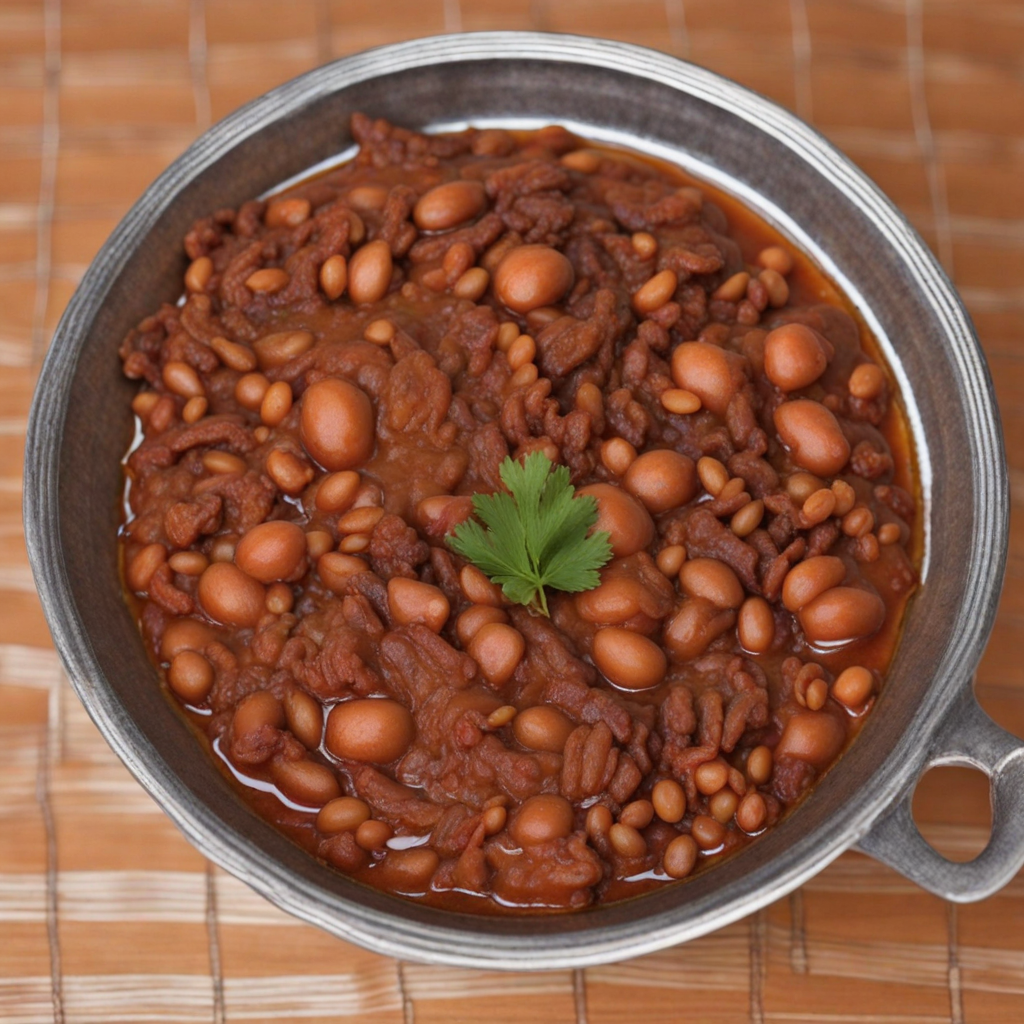Thépaté
Thépaté is a delightful Congolese dish that brings together a unique fusion of flavors, textures, and traditions, making it a must-try for adventurous food enthusiasts. This savory delicacy typically features a base of well-seasoned meat, often chicken or fish, which is marinated with a blend of local spices and herbs. The marination process infuses the protein with a rich depth of flavor, while the cooking method—usually steaming or slow-cooking—ensures that the meat remains tender and juicy, allowing the spices to permeate each bite. Accompanying the protein, Thépaté is often served with a vibrant array of side dishes that highlight the region's agricultural bounty. Staples like cassava, plantains, or rice provide a hearty foundation, while colorful vegetable medleys, often sautéed or stewed, add a refreshing crunch and nutritional balance to the meal. The use of ingredients like okra, tomatoes, and leafy greens not only enhances the dish's visual appeal but also introduces a delightful contrast of flavors that complement the main attraction. The experience of enjoying Thépaté is elevated by its communal aspect, often enjoyed in gatherings where diners share the dish from a central serving plate. This encourages a sense of togetherness and celebration, making it more than just a meal; it’s a cultural experience. Each bite transports you to the heart of Congo, connecting you to its rich culinary heritage and the stories behind its beloved recipes.
How It Became This Dish
Thépaté: The Culinary Soul of Congo #### Origins Thépaté, a traditional dish from the Democratic Republic of Congo (DRC), is not just a meal—it's a cultural emblem steeped in history and a testament to the resilience and creativity of the Congolese people. The origins of thépaté can be traced back to the various ethnic groups inhabiting the vast and diverse landscapes of Congo, from the dense rainforests to the expansive savannas. The dish is primarily made from cassava flour (also known as manioc or yuca), which has been a staple in the Congolese diet for centuries. Cassava was introduced to Africa from South America in the 16th century, quickly becoming a fundamental part of the diet in many African countries due to its adaptability and resilience in various climates. In Congo, cassava is often processed into different forms, one of which is the flour that serves as the base for thépaté. The dish itself is a type of fufu, a starchy accompaniment commonly served with sauces or stews, and it reflects the agricultural practices and food traditions of the Congolese people. #### Cultural Significance Thépaté holds a special place in Congolese culture, symbolizing not only sustenance but also community and togetherness. The preparation and consumption of thépaté often involve communal activities where family members and friends come together, bonding over the cooking process. This is particularly evident during significant cultural events, such as weddings, funerals, and community gatherings, where thépaté is served as a gesture of hospitality. The dish also plays a role in the rites of passage within various ethnic groups. For instance, during initiation ceremonies, thépaté is often presented to signify the transition from childhood to adulthood. The act of sharing thépaté reinforces social ties and highlights the importance of community cohesion in Congolese society. In addition to its communal aspects, thépaté is deeply intertwined with the spiritual beliefs of the Congolese people. Certain rituals may invoke ancestral spirits or deities, and the preparation of the dish can be accompanied by prayers and offerings, reflecting a profound respect for the land and its resources. #### Development Over Time The evolution of thépaté mirrors the broader historical changes that have impacted the Democratic Republic of Congo. The colonial era, beginning in the late 19th century, introduced significant shifts in agricultural practices and food systems. The imposition of colonial rule disrupted traditional farming and food preparation methods, leading to a reliance on imported foods and ingredients. Despite these challenges, Congolese communities adapted, finding ways to incorporate thépaté into their diets while preserving its cultural significance. After gaining independence in 1960, the DRC experienced a tumultuous period marked by political instability and economic challenges. In the face of these adversities, thépaté emerged as a symbol of national identity and resilience. It became a representation of the Congolese spirit, reflecting the ability of the people to withstand hardships while maintaining their cultural traditions. In contemporary times, thépaté has undergone a revival as Congolese cuisine gains recognition on the global culinary stage. Chefs and food enthusiasts are exploring traditional dishes, often reinterpreting them in innovative ways while remaining true to their roots. Thépaté has found its place in restaurants and food festivals, introducing a wider audience to the flavors and traditions of Congo. The ingredients used in thépaté have also evolved, with some modern variations incorporating local vegetables, meats, or spices. This adaptability showcases the dynamic nature of Congolese cuisine, which continues to evolve while honoring its heritage. The dish can now be found in various forms, from the traditional preparation to contemporary adaptations that reflect global culinary trends. #### Thépaté in the Diaspora As Congolese communities have spread across the globe, so too has the popularity of thépaté. The diaspora has played a critical role in keeping the dish alive and relevant, passing down recipes and traditions to younger generations. In cities with significant Congolese populations, such as Brussels, Paris, and London, thépaté is often featured in community events and cultural festivals, serving as a reminder of their heritage. Restaurants serving Congolese cuisine have emerged in various parts of the world, where thépaté is often highlighted on the menu as a must-try dish. This globalization of Congolese food has fostered a greater appreciation for its rich flavors and cultural significance, allowing people from diverse backgrounds to experience the culinary traditions of the DRC. #### Conclusion Thépaté is more than just a dish; it is a vibrant representation of the history, culture, and spirit of the Congolese people. Its origins in the agricultural practices of various ethnic groups reflect a deep connection to the land, while its communal significance underscores the importance of togetherness in Congolese society. As thépaté continues to evolve and adapt to the modern culinary landscape, it remains a symbol of resilience and identity—an edible narrative that tells the story of a people’s journey through history. In an ever-changing world, thépaté stands as a testament to the enduring power of food as a means of cultural expression, connection, and continuity. Whether served at a grand celebration or enjoyed in a humble home, thépaté invites us to savor not just its flavors, but the rich tapestry of stories and traditions it embodies. Through each bite, we are reminded of the resilience of the Congolese spirit and the unbreakable bonds forged through food.
You may like
Discover local flavors from Congo


